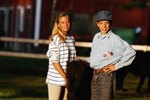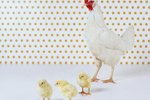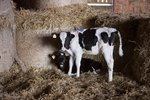Designing good cattle pens, or corrals, will save hours of working the animals later. There will be less stress on the cattle, and on the cowboys, and an increase in safety for everyone. All of this will translate into a better bottom line on your initial investment.
Prepare to create your design for cattle pens by deciding on how often you will be working your animals as well as how many cattle will be populating the pens at any given time. You will also need to have a general idea of the terrain and prospective size of the corrals. Adult cows need about 20 square feet each while baby calves need only about 8 square feet for the first three months until weaning.
Several universities have done studies on the psychology of cattle and have corresponding plans for cattle pens available online. These can be either used, or the ideas incorporated, into your own plans.
Draw a rough sketch that is a scale size of the cattle pens. This will give you enough information to calculate the cost of the materials for the final design. One critical layout is if you are going to have a sorting alley or circle pen to work the animals through to squeeze into chutes. Also, sketch in any electrical and waterlines that may be required. Decide on materials to be used. Options include pipe, panels and wood. Each has its own benefit and drawback. A successful set of cattle pens can be created from each or a combination.
Draw your final scale design. Using the information from your rough sketch and material selection, draw a final scale set of your cattle pens. Keep in mind any future expansion plans so that you can incorporate areas where pens can be added or an extra gate may be desired.
Things You'll Need
Graph paper
Pencil
Eraser
Ruler
Tips
Have several people look over your drawings, especially anyone with expertise in working with cattle. The input can be insightful and a fresh eye can quickly locate potential problems.
References
Resources
Tips
- Have several people look over your drawings, especially anyone with expertise in working with cattle. The input can be insightful and a fresh eye can quickly locate potential problems.
Photo Credits
-
Jupiterimages/BananaStock/Getty Images





